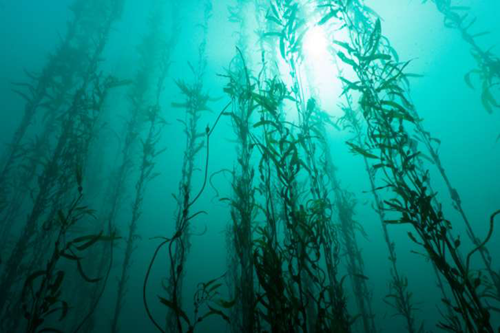Articles and Press
Understanding Water Clarity
Understanding pond clarity and the balance of inorganic and organic materials in the pond.
Understanding Water Clarity

A crystal clear mountain stream makes a great image for a beer commercial. But in the lake environment, crystal clear water has some interesting implications. Let's take a closer look at the components of clarity.
Inorganic and organic materials suspended in the water column impact clarity. In the lake manager's jargon clarity is called turbidity. Turbidity is measured by a device known as the Turbidmeter. Turbidmeter is basically a photometer that measures the diffusion of light in a water sample. Typical uses of this device include control of beverage clarity (wine and beer industry,) water and waste treatment, and the determination of bacterial growth rates. For our purposes, we can generally measure clarity by visibility. Can you see the bottom at foot (50cm) or at 10 feet (3 m.)
Inorganic materials, better known as Total Suspended Solids (TSS) have significant impact on clarity and the aesthetic beauty of any lake or basin. You can see high TSS counts when effluent is used, there is a high level of soil erosion, or when a lake has a clay bottom. Clay has a high cation exchange rate or positive molecular charge, which keeps it in suspension. For lake management purposes we like to see TSS counts below 5mg per liter. Higher counts result in lakes that look cloudy or brown. The best way to manage through these situations is prevention. Buffer plants around the lake's perimeter will slow down or stop the ingress of solids into the lake. Once in the lake a lake dye will mask the problem. An aeration or ozone system will help oxidize the solids, dropping the solids to the lake bottom.
Organic materials, especially phytoplankton, have a big impact on turbidity. Phytoplankton is the lake manager's word for free-floating microscopic algae. We measure phytoplankton populations with a device called a colorimeter. This gives us the level of chlorophyll in the water. As lake manager's we strive for counts below 2mg per liter.
How can you use this information? We are striving for balance in the lake. If there is no clarity (i.e. the lake is very turbid) we will experience several negative phenomenon. The lake will be an ugly eyesore on an expensive property. Secondly, we will experience oxygen depletion through shading. The high turbidity will prevent sunlight from penetrating the surface. Unless supplemental aeration is added, the lake will turn anaerobic.
What if the clarity is too good? If there is absolutely no phytoplankton in the water, there will be no forms of animal life present. Phytoplankton is the basic building block of the aquatic food chain. We often see relatively new lakes with clear water develop problems with benthic algae and weeds, especially on golf courses. The clear water allows too much sun to reach the lake bottom. Crystal clear water looks great in a swimming pool or a glass. But in a lake setting water totally devoid of plants is unnatural. A healthy lake is usually a shade green or blue. The balance between too much and too little turbidity is a critical factor that as water quality management consultants we must be aware of.
Pond Problems?
Algae, Odors & Muck – YUCK!
Let an Otterbine Specialist Help You Find a Solution
